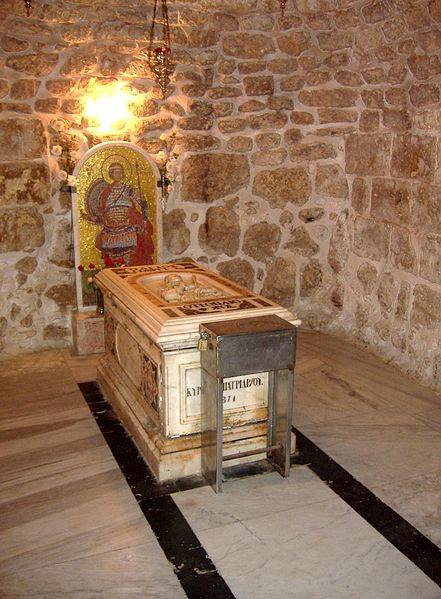28 Feb. A non-Jewish man from Palestine thanks Jesus
"While Jesus was on his way to Jerusalem, he was going through the area between Samaria and Galilee. As he came into a small town, ten men who had a skin disease met him there."
"They did not come close to Jesus, but called to him, 'Jesus! Master! Have mercy on us!' When Jesus saw the men, he said, 'Go and show yourselves to the priests'. As the ten men were going, they were healed."
"When one of them saw he was healed, he went back to Jesus, praising God in a loud voice. Then he bowed down at Jesus's feet and thanked him. (And this man was a Samaritan.)"
"Jesus said, 'Weren't ten men healed? Where are the other nine? Is this [non-Jewish] Samaritan the only one who came back to thank God?' Then Jesus said to him, 'Stand up and go on your way. You were healed because you believed.'"
(Luke 17:11-19)

In October 29AD, Jesus went up to Jerusalem to attend the Feast of Tabernacles. He went secretly because he knew the Pharisees were plotting his death.
On the way to Jerusalem, Jesus passed through Samaria, where the prophet Elisha had cured Naaman, the Syrian commander, from leprosy (see 2 Kings 5:1-14).
Just across the border from Galilee, Jesus entered a small village where ten men with leprosy – an infectious skin disease – pleaded with him, from a distance, to cleanse them of their dreaded affliction. Immediately, like Elisha, Jesus healed them and told them to report their cleansing to the local priest (see Leviticus 14:1-11).
Later, one of the men returned, threw himself at Jesus’s feet and thanked him. Jesus asked where the other nine men were, and pointed out that only one had returned to praise and thank God. He noted that the man who returned was not a Jew but a Samaritan – the race that the Jews despised because of their mixed ancestry. This meant they were regarded as spiritually ‘unclean’ and inferior in the eyes of most Jews (see John 4:9).
The village where Jesus healed the ten men with leprosy is believed to be the hilltop village of Burqin, 2 miles / 3 km to the west of the town of Jenin. During the 5th century, an altar was built here in a cave, identified by Roman Byzantine Christians as the place where the lepers had been kept in isolation from the rest of the community.
During the next three centuries, a church was built in front of the cave and gradually extended. This church was later abandoned, but renovated and enclosed by a stone wall by Crusaders in the 12th century. In the 18th century, a new church was built over the site of the cave and the remains of the older church.
Today, the Greek Orthodox Church of St George, on the site of the lepers’ cave and the older Byzantine church, is regarded as the third oldest church in the world. It is still in regular use by the local Greek Orthodox Christian community.
The photo (by OneArmedMan) shows the tomb of St George at Lod (Biblical Lydda) in Israel.
You can read more about Jesus's visit to Jerusalem for the Festival of Shelters @ https://www.thebiblejourney.org/…/jesus-pays-the-temple-tax/
